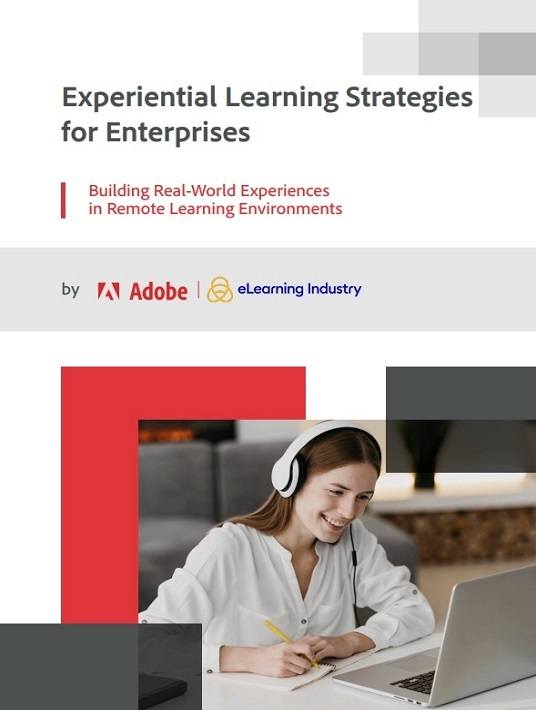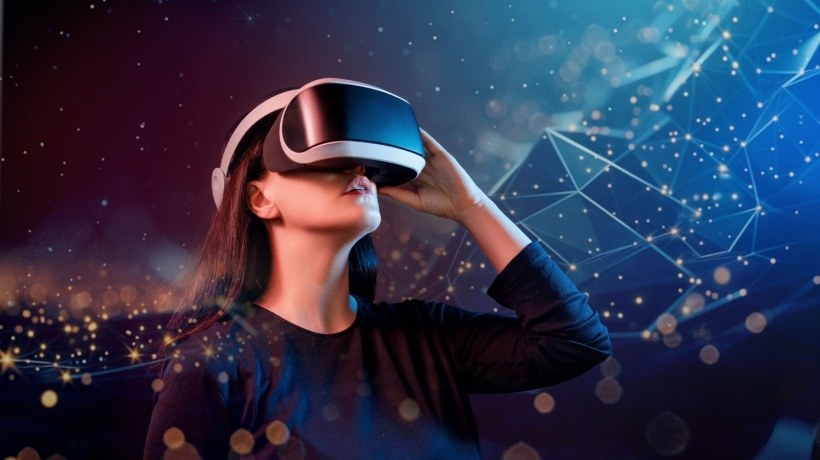Prime Experiential Learning Examples To Implement In Virtual Training
We present you with 3 case studies that prove that virtual training can be just as—if not more—effective than traditional methods, as well as some experiential learning examples you can implement in your organization.

3 Case Studies That Show Experiential Learning In Action
Case Study #1
Blackmores Institute [1] turned to Adobe Connect to create and implement a virtual education solution when the pandemic made in-person training impossible. As a leading natural health company with a focus on research and education, it was crucial for them that their new training solution was versatile and customizable to accommodate the varied needs of their employees and stakeholders across Australasia.
Using the customizable pods that Adobe Connect offers, Blackmore’s Institute created numerous types of virtual experiences for different training programs. In addition, breakout rooms were used to encourage reflection and collaboration among learners. Integrated tools such as whiteboards allowed instructors to create captivating multimedia-powered sessions. As a result, their remote staff became actively engaged in the learning process and were able to complete training faster and more efficiently. Also, after eliminating participation barriers, they achieved larger and more diverse attendance. Finally, they created a strong collaborative community that knows no borders.
Case Study #2
Blue Sky Broadcast [2] is an eLearning and virtual event organizer that facilitates events for companies and organizations in technical industries, such as life sciences and clinical research. As such, the company faces many challenges, including upholding high security and compliance standards and meeting the requirements to support as many as 1000 concurrent users, all while offering a consistent experience before, during, and after events. Therefore, they partnered with Adobe Connect to help them integrate the best video conferencing and webinar capabilities into their proprietary event learning platform.
Adobe Connect offered Blue Sky Broadcast all the multimedia and eLearning webinar features it needed to elevate its own platform. The company used the solution’s robust infrastructure and versatile features to introduce video, audio, and collaborative experiences in training processes, which attracted and enabled more users to attend events. At the same time, breakout rooms boosted learner engagement by creating more meaningful and in-person learning experiences. Finally, they met their compliance requirements and were able to bring down costs by delivering smaller-scale virtual events.
Case Study #3
2U [3] is a company that designs and implements virtual campuses for numerous colleges and universities in the U.S., aiming to facilitate access to higher education. their services include live online classes but also program marketing, tech support, and Instructional Design. Therefore, partnering with Adobe Connect to elevate and customize their virtual experiences was a natural choice.
Using Adobe Connect’s customizable pods, 2U was able to create online classrooms and office-hour sessions for educators and students. The persistent classroom feature allowed educators to offer consistent learning environments equipped with the necessary tools and materials. Learner engagement soared as instructors had access to polls, chats, whiteboards, animations, and breakout sessions. Ultimately, Adobe Connect managed to offer 2U higher attendance and success rates with its personalized and collaborative virtual learning experiences.
5 Experiential Learning Examples To Get You Started
The companies above were able to use Experiential Learning for their training needs with the help of advanced virtual learning software. Below, we suggest a few examples of Experiential Learning activities you can leverage to enact meaningful change in your organization.
Live demos
Live demonstrations can make new concepts instantly comprehensible to learners. Using high-quality videos and audio, learners can grasp difficult technical tasks quicker than reading directions. A robust tool could also allow trainees to access the video right after the end of the training session so that they can pause and rewatch any segments.
Games
Games are one of the best informal forms of training. They enable users to identify their specific strengths and weaknesses and encourage them to keep training to improve their performance. Some games also promote teamwork by encouraging multiple users to collaborate to achieve goals.
Simulations
Many think that online training cannot support the most vital aspect of Experiential Learning, which is hands-on experience. Simulations disprove this notion by enabling learners to interact with objects as effectively as in real life. Simulations keep learners engaged and help them gain a deeper understanding of the material at hand.
Discussion Boards
Reflection and discussion are excellent examples of Experiential Learning. They promote collaboration among learners, analysis of new ideas, and exchange of different opinions. Leverage this activity by starting training programs with a discussion board that helps trainees realize why you are training on this particular subject and its various facets.
Storytelling Events
Storytelling is a powerful tool for in-person and online learning. It gives learners an inside look at other people’s experiences and helps them build connections through similarities. In addition, receiving information in the form of a story makes it easier to recall and implement in real-life situations.
Conclusion
In this article, we saw a few examples of how Experiential Learning paired with the right tool transformed virtual learning for three companies. By implementing the simple activities, we mentioned, you can start your Experiential Learning journey and reap its numerous benefits.
Download the eBook Experiential Learning Strategies For Enterprises: Building Real-World Experiences In Remote Learning Environments today to launch programs that leave a lasting impression and maximize ROI.
Case Studies
[3] 2U



![Experiential Learning Strategies For Enterprises: Building Real-World Experiences In Remote Learning Environments [eBook Launch]](https://cdn.elearningindustry.com/wp-content/uploads/2022/09/Shutterstock_1845419434.jpg)




